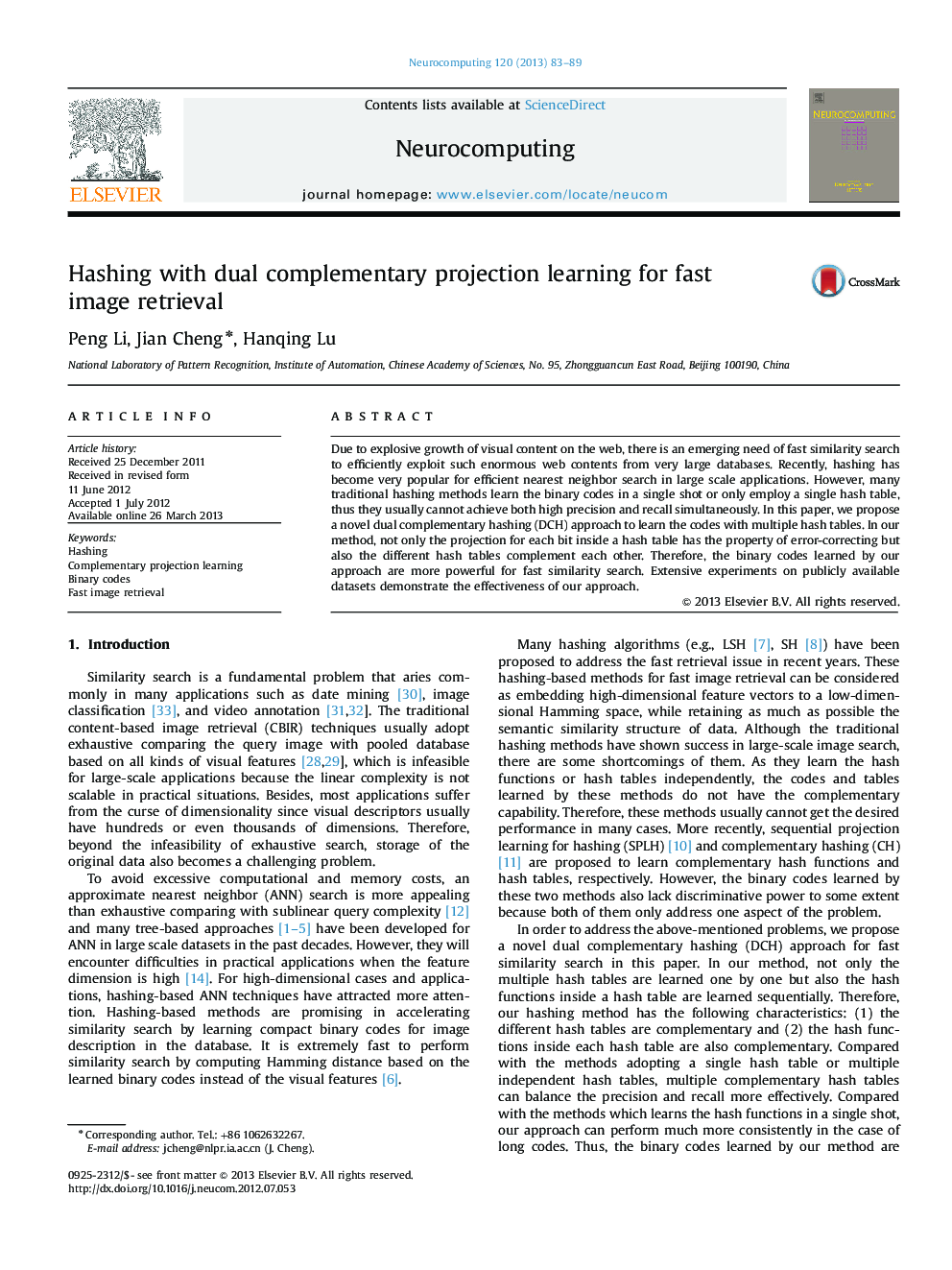| Article ID | Journal | Published Year | Pages | File Type |
|---|---|---|---|---|
| 410213 | Neurocomputing | 2013 | 7 Pages |
Due to explosive growth of visual content on the web, there is an emerging need of fast similarity search to efficiently exploit such enormous web contents from very large databases. Recently, hashing has become very popular for efficient nearest neighbor search in large scale applications. However, many traditional hashing methods learn the binary codes in a single shot or only employ a single hash table, thus they usually cannot achieve both high precision and recall simultaneously. In this paper, we propose a novel dual complementary hashing (DCH) approach to learn the codes with multiple hash tables. In our method, not only the projection for each bit inside a hash table has the property of error-correcting but also the different hash tables complement each other. Therefore, the binary codes learned by our approach are more powerful for fast similarity search. Extensive experiments on publicly available datasets demonstrate the effectiveness of our approach.
